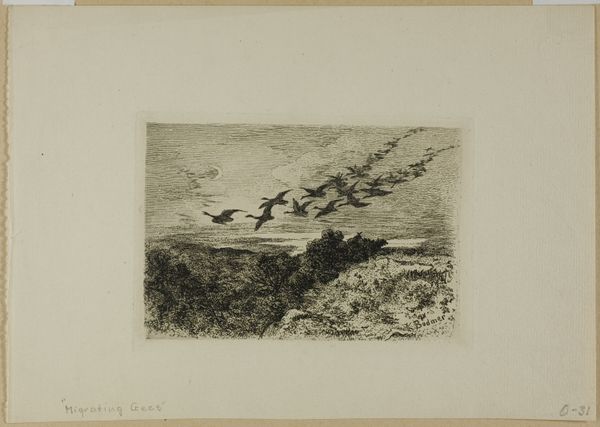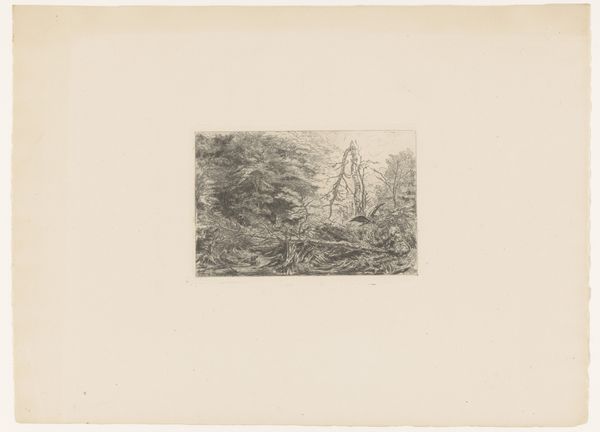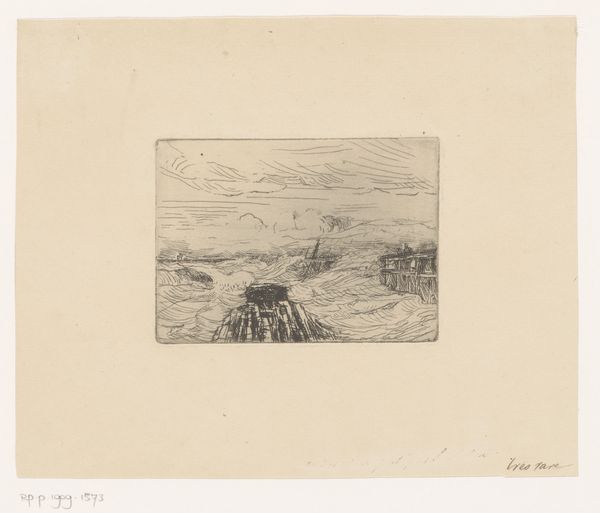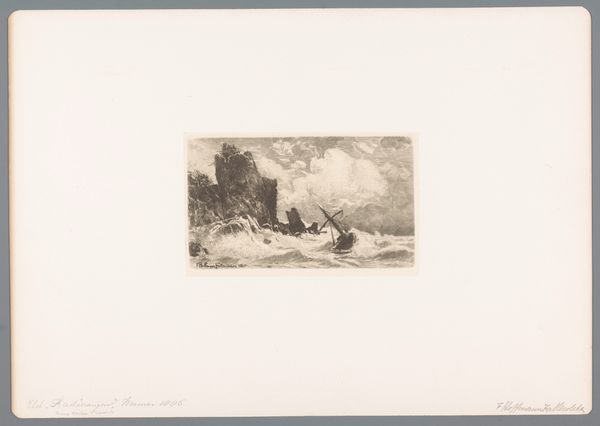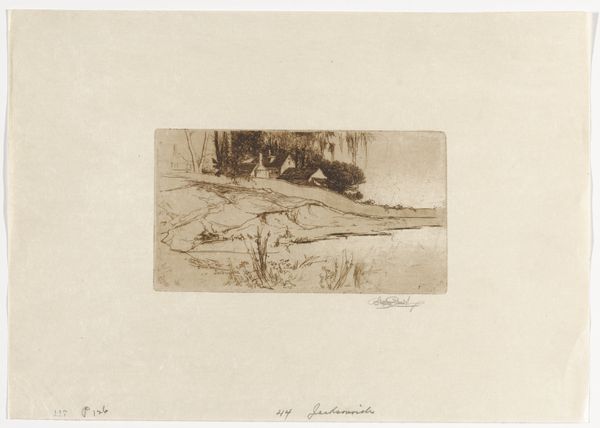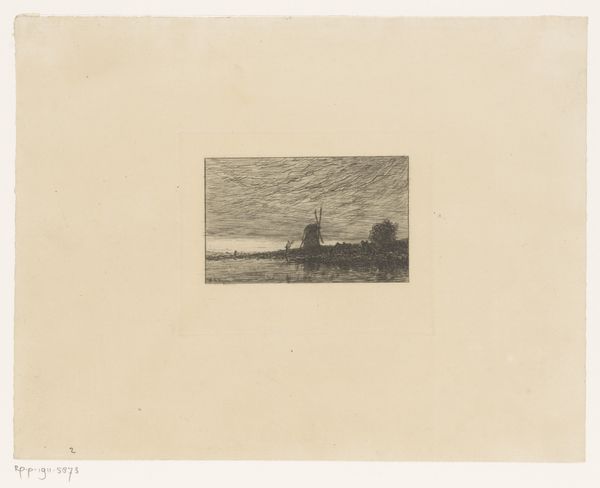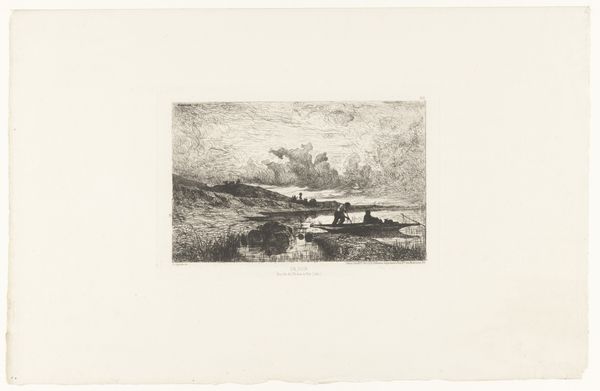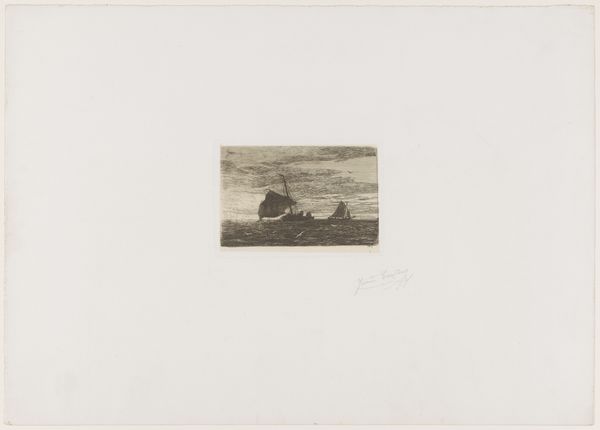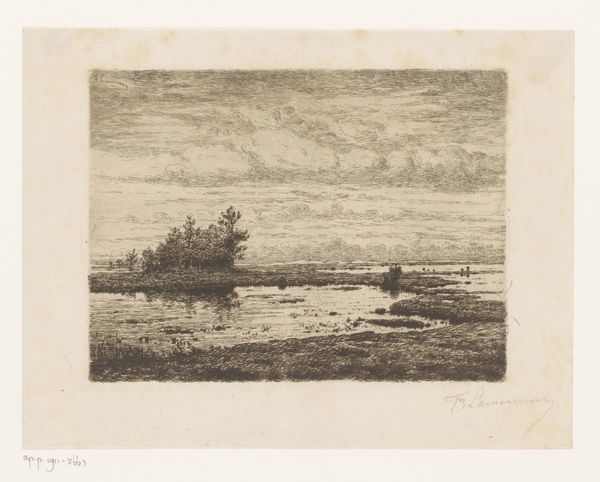
print, etching
#
dutch-golden-age
# print
#
etching
#
landscape
#
line
#
realism
Dimensions: height 109 mm, width 160 mm
Copyright: Rijks Museum: Open Domain
Curator: The starkness of this etching immediately grabs me. It feels incredibly isolated, yet also somehow peaceful. Editor: We’re looking at "Two Mills on a Watery Meadow" by Albert Dillens, created in 1874. It’s an etching that captures a familiar Dutch scene in monochrome. Think of it in terms of its labor context and how mills figured into early industrialization, controlling crucial commodities like grain. Curator: I see these mills almost as figures, part of a landscape that has both benefited from and been fundamentally altered by human intervention. Do you get a sense of precarity from this? The fragility of land reclamation, the exploitation of natural resources... it resonates powerfully with contemporary climate anxieties. Editor: Indeed. Consider the craft of etching itself—the artist meticulously working with acid to bite into the metal plate, a direct physical engagement mirroring the human labor embodied by the mills. What about the socio-economic ramifications in regards to food and sustainability, considering mills' central role? Curator: Absolutely, the image is layered with political meaning. These aren't simply quaint, pastoral objects, they represent power structures, class divisions tied to the control of essential goods and how labor functions within those structures. Editor: What’s interesting is how the limited tones – a product of its medium–force us to engage with its subject matter in a stripped-down form, focusing on the direct relationship between work and nature. Also, it must be said the scale and number of prints made says much about commodification, with each copy becoming a discrete piece. Curator: But within its monochrome constraint there’s remarkable variation in line that articulates its environmental concern; Dillens uses short, frenzied marks to portray the clouds looming overhead. It gives an overwhelming sense of pending crisis; it makes the water appear stagnant, contaminated. The composition also reminds me of the artist's awareness regarding ecological dangers through labor practices. Editor: This piece, at its core, speaks to both material conditions of 19th century Netherlands but remains highly relevant now. We must recognize labor when dealing with pieces like this, while paying close attention to materiality. Curator: Looking at "Two Mills", it brings to focus our complicated relationship with industrial growth, reminding me of the ongoing fight for ecological justice that we must actively partake in.
Comments
No comments
Be the first to comment and join the conversation on the ultimate creative platform.


